
"The Off Hours" is now available on most on-demand platforms including Comcast, Verizon, AT&T and most major-cable services. NOTE: The film is not available through DirecTV. It will be released on DVD in January and will premiere on Hulu and Netflix later in 2012.
There's never been a better time for filmmaking in the Pacific Northwest. Running the entire spectrum from filmgoers and critics to actors, writers and production talent aplenty, the Seattle film community has always been close-knit and cooperative, and its D.I.Y. resourcefulness has resulted in a slow but steady rise of intermingling talent. (Full disclosure: Several of the creative people mentioned below are casual Facebook acquaintances of mine.) Ten years ago and earlier, you were lucky if your micro-budgeted project got finished and accepted by festivals, and for several years it seemed like the Native American drama "Smoke Signals" (written by Northwest author Sherman Alexie and distributed by Miramax in 1998) would be Seattle's only claim to a locally-produced breakout success.

Undeterred, Seattle's film community continued to percolate like the coffee that stereotypically defines "The Emerald City" for most of the outside world. Abundant indie-film projects, and the passions that fueled their creation, have led to a natural progression of experience and expertise, and this year alone the Sundance film festival hosted four films shot in Washington state. When you consider the local history that led us from "Gas City" (an obscure, no-budget 1978 slacker drama shot among the aging motels and nightspots of Seattle's Aurora Avenue) to the international success of director Lynn Shelton's "Humpday" (2009), it's no wonder that Seattle has become the Northwest's answer to Austin, Texas: A film- and music-loving city (per capita, Seattleites are still the nation's #1 moviegoers) where independent filmmakers can find the talent, resources, and community support to foster their projects from start to finish. Indeed, "Start-to-Finish" is the name of an innovative program, introduced by the Northwest Film Forum in 1998, designed to select and co-produce films with the goal of national and global exposure. Canadian alt-auteur Guy Maddin found NWFF so appealing that he came here to shoot his 2006 film "Brand Upon the Brain!," now available on DVD from the Criterion Collection (and photographed by the gifted Benjamin Kasulke -- see below).
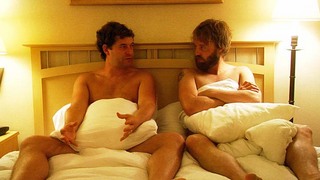
With or without the support of NWFF, Seattle Film Institute and year-round programs at the Seattle International Film Festival's brand new Film Center, at least 62 independent films (shorts and features) have been made in the Seattle area since 2003. And while "Humpday" may be the region's most recent and best-known success story (propelling Shelton to a "Mad Men" directing gig and her next feature, "Your Sister's Sister," starring Emily Blunt), "The Off Hours" is the latest proof that Seattle's filmmaking talent is constantly evolving. Now available on-demand after its debut at Sundance last January (where it earned conditional praise from Variety and The Hollywood Reporter), it's the second feature from Seattle-based writer-director Megan Griffiths, a graduate from the Ohio University School of Film who demonstrates a sedate, well-examined affinity for melancholy souls marking time in a downtrodden blue-collar underworld.

Everything about this modest, well-made drama drips with the Pacific Northwest's infamous precipitation, but Griffiths never identifies her truckstop location as anything more than "the only town in 50 miles," so you won't see any of Seattle's best-known landmarks (the Space Needle, Pike Place Market, Puget Sound ferry boats) to ground you in a specific place or time. Instead, "The Off Hours" is strictly off the beaten path, where an old LP of Tom Waits' "Nighthawks at the Diner" could be spinning on all-night replay. The locations might be in Burien or SoDo (industrial and suburban areas south of downtown Seattle), but they're spiritually located in that kind of universal limbo found around the globe, wherever denizens of the night lead routine lives of quiet desperation. Sparsely populated by drifters, loners, losers, truckers and graveyard-shift waitresses pouring bottomless cups of battery acid, "The Off Hours" is set in the kind of place where dreams go to die.

Even the diner is generic: Its grimy sign reads only "Diner - Open 24 Hours." With its crooked counters and worn-out window-blinds, it's never been remodeled and never will be. The toaster oven looks ancient and filthy, and the coffee sure as hell isn't Starbucks. (Seattle trivia: The actual location is an abandoned diner in Burien formerly known as Ed's #1. Production designer Ben Blankenship did a fine job of restoring it to tawdry functionality.) The owner complains about lack of customers, but that doesn't bother Francine (Amy Seimetz), who shares the night shift with Jelena (Gergana Mellin) and a few locals and truckers who drop in on their way to nowhere. Young and pretty but mired in a kind of self-induced entropy, Francine uses sex as a way to kill time and remind herself that she can still feel anything. For Jelena, a "former mail-order bride" who's well past her prime and keenly aware of it, using her breaks for an occasional back-room screw is an acceptable alternative to chronic isolation.
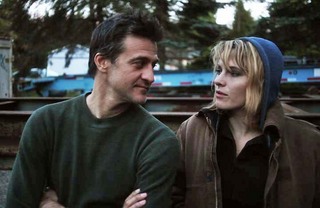
The arrival of Oliver (Ross Partridge, from the Duplass Brothers' 2008 indie horror comedy "Baghead") provides a much-needed catalyst for Francine's awakening from dead-of-night lassitude. He's a former banker who switched to truckdriving as a way to reset his personal priorities. He's also a faithful husband and father, so Francine's casual come-ons are fraught with an awkward mix of reticence and desire -- just enough mutual reluctance to remind Francine of how another fling would perpetuate her soul-killing routine. Not so lucky in the marriage department is Stu (Tony Doupe), another local-in-limbo estranged from his teenage daughter and mature, level-headed ex (played with low-key authority by Griffith's friend Shelton, also credited as consulting producer). The other men in Francine's intimate orbit are her foster brother Corey (Scoot McNairy) and her paternally comforting part-time lover Ty (Bret Roberts), but they're stuck in their own flypaper and need to be jettisoned.
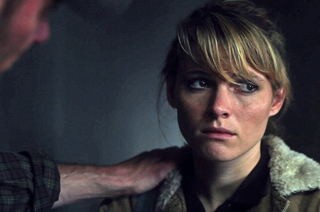
With a refreshing empathy toward weary wage-earners who don't always deserve it, Griffiths never passes judgment on their aimlessness, and anyone who's receptive to the film's languid pacing and pregnant pauses will find much to appreciate in the way Griffiths lingers on expressions of deep regret and quiet contemplation. Bolstered by Seimetz's gently sympathetic performance, "The Off Hours" is ultimately about Francine's realization that only she holds the key to her own liberation from the doldrums of the diner.
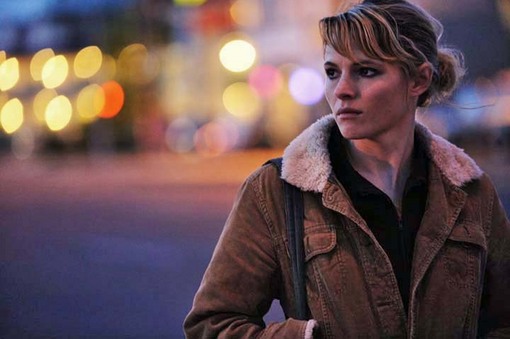
As the trade papers say, tech credits are superb: Proving himself entirely worthy of his current buzz in the industry (and earning this film's sole nomination for an Independent Spirit Award), Benjamin Kasulke capably fulfills the mandate of all dramatically sensitive cinematographers. Efficiently shooting with a Canon 5D digital camera and frequently using a sharp, narrow depth of field to isolate faces in focus, he enhances Griffiths' direction and Blankenship's sets by serving the physical and emotional needs of every scene, and makes his own considerable skill obvious without showing off. Likewise, anyone who savored the subtle scoring of TV's 'Friday Night Lights' (which may or may not be an influence here) will appreciate the similar way that Joshua Morrison and Jeramy Koepping's score and Vinny Smith's sound design expand the emotional landscape of "The Off Hours" beyond the limits of its physically cramped environs.
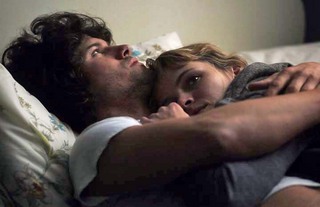
I suspect everyone involved in the creation of "The Off Hours" has come to grips with the blessings and curses of those physical limitations and how they impacted the film's potential exposure. Having gained valuable experience as a first assistant director, Griffiths has done a remarkable job of matching the intimacies of her screenplay to a bare minimum of available resources. Watching "The Off Hours," you never sense that it strays very far from being the physically and emotionally intimate film that Griffiths intended to make, and to some extent (with all due respect to profit motive) that's the only measure of success that really matters.

Still, it's easy to understand why theatrical distributors and some critics balked at the film's lack of conventional narrative and relative sparseness of explicit character detail (essentially echoing Sean Penn's response to "The Tree of Life"). If you compare "The Off Hours" to a similarly-themed drama like James Mangold's "Heavy" (one of my personal favorites from 1996), you can see why less patient viewers might disengage from its relatively tight-fisted grip on what is typically referred to as "story." For a lot of people watching "The Off Hours," there simply won't be enough there there.

Since I loathe the "here's how I would've done it" school of film criticism, I'll refrain from offering script notes on a finished film. Besides, "The Off Hours" had its day in court at Sundance and now it's on-demand. But consider this: There are always alternatives to that fickle yardstick known as "commercial viability," and the only conventional "crime" committed by "The Off Hours" is that it demands and rewards a more thoughtful and participatory quality of attention. That makes it a film worth discovering. In the grand scheme of things, it inherited at least some of its Northwest DNA from Bob Rafelson's 1970 classic "Five Easy Pieces," and that's a comparison its creators can be proud of as they embark on future projects.
Profile of Ben Kasulke, nominated for an Independent Spirit Award for best cinematography for "The Off Hours":
_ _ _ _ _

A Seattle-based freelancer, Jeff Shannon has been writing about film and filmmakers since 1985, for the Seattle Post-Intelligencer (1985-92) and The Seattle Times (1992-present). He was the assistant editor of Microsoft's "Cinemania" CD-ROM and website (1992-98), where he worked with rogerebert.com editor Jim Emerson, and was an original member of the DVD & Video editorial staff at Amazon.com (1998-2001). Disabled by a spinal cord injury since 1979 (C-5/6 quadriplegia), he occasionally contributes disability-related articles to New Mobility magazine, and is presently serving his second term on the Washington State Governor's Committee on Disability Issues and Employment.





